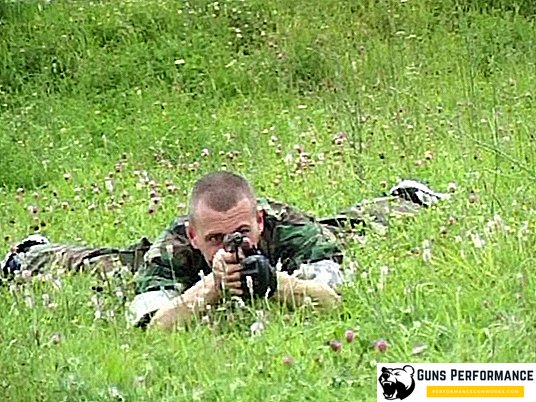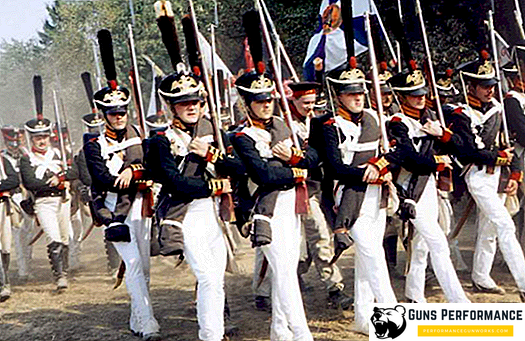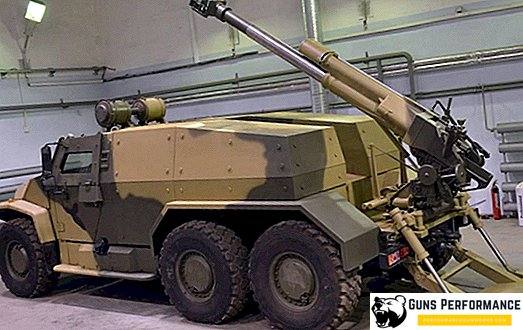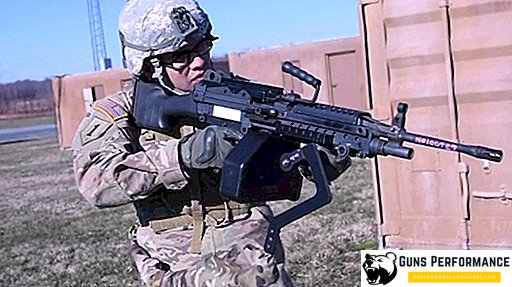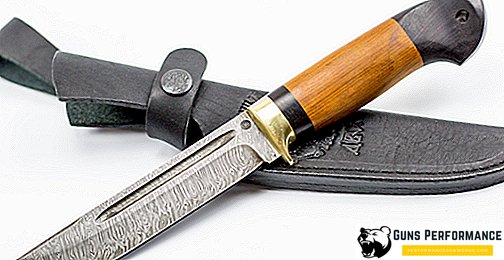
Excavations of archaeologists, as well as studies of historians of ancient Russia show that every ancient Slavic warrior had a knife. This item was universal and was used both for domestic needs and as a weapon of last chance. Although many modern schools of Russian knife fighting claim that this art originated in ancient times, in fact, knives were used very rarely in battle. Indeed, why do we need a knife when a warrior has a whole arsenal of more effective items?
As for the haul knife, it was a real military weapon that was used in desperate situations when axes and swords broke. An unarmed warrior, who had already surrendered to captivity, could suddenly get a knife from his bootleg, and with a quick movement plunge him into the enemy.
General view of the ancient Slavic "zaspozhnik"
According to archaeological research, ancient hardening knives were worn in the bootleg and easily removed from there with one hand. The knife had the following features:
- The blade of the knife was about 25 centimeters long;
- With its shape, the blade copied boars fang, and the blows were made from the bottom up;
- The narrow blade and one-and-a-half sharpening provided the knife with very good penetrating qualities;
- The handle of the knife could be both iron and skin wrapped. This suggests that this knife was not used in everyday life, since it is very difficult to carry out work with this type of handle;
- If you believe the archaeologists, then at one time, the fiery knives often had straps. This allowed not only to quickly grab the weapon, but also helped not to lose the weapon.
Although modern haul-off knives are usually straightforward, all historical finds suggest that the blades were precisely curved. Judging by the form characteristic of Eastern weapons, which was common in ancient times, the Slavs came to this knife from the steppe nomads. According to one more theory, the hawk knives could be descendants of ancient daggers from the horn, which often looked that way.
The official version of the origin of the breeches

The first information about knives of the foul-type scientists was obtained at the beginning of the 19th century. At that time, they began to carefully study the "Word about the regiment of Igor". One of the phrases that Apollo Mikov translated was as follows: "... warriors without shields and patrons are clicked by the regiment win." In this phrase, the researchers saw a direct mention of a weapon, presumably a knife, with which the prince's squad was eager to fight.
In 1841 the historical book Viskovaty was published, which described uniform and weapons of the Russian troops. In this book, for the first time a drawing of a haunting knife with a curved blade appears. The explanations indicate that this weapon was used in case of damage to the main weapon.
It would seem that the phrase from The Lay of Igor was explaining everything, but there is one discrepancy that the scientists might not know. Going into battle with one knife on a warrior armed with a sword, spear or ax is a real suicide. Of course, one can extol the skill of the battle of the ancient Slavs as much as necessary, but it is unlikely that they fought with knives alone.
Version of Ivan Kirpichev

Ivan Kirpichev, who is one of the world's best blacksmiths making damask blades, argues that the bullet-knife is simply an invention of translators who are extremely far from the knife subject. As his innocence, he cites several arguments:
- In the ancient Slavic language there was the word "boot", which meant not shoes at all, but a wooden club with root thickening at the end. This explains why the ancient warriors at the time threw shields. The two-handed heavy club was really a terrible weapon, therefore, according to Kirpichev, the special "club warriors" were probably the "breeders", perhaps even the Berserkers, who often preferred just such a heavy and simple weapon;
- The second serious argument is that boots in Russia were a rather rare type of footwear, and there were only princes and rich warriors. Ordinary warriors walked in sandals.
In addition, even the boots of the ancient Slavs did not have a solid tops, which made it difficult not only to wear a curved blade, but even a straight knife. It turns out that the curved knives are not "bedwigs", but simple knives that were worn on the belt in the sheath.
At present, Kirpichev's version is not recognized by historians, being no more than a fascinating hypothesis. In any case, the bullet knives, which are currently sold, are copies of the weapons of the Great Patriotic War, which were worn just behind the bootleg.
How the bullet knife was worn

Nowadays, the blade, which was worn in a boot, is meant as a firing knife. This shoe made it possible to protect the feet from damage in the forest or steppe, protecting the wearer from snake bites. The absence of ribbons and laces allows you to quickly put on shoes, which was important for the warrior. The high ankle was as if specially intended for the hidden weapon.
The boot knife was worn as follows:
- Since the weapons of concealed carrying must be quickly and imperceptibly removed, the knife is located in the right boot. For a left-handed person, the location changes to the left boot;
- Often the sheath is sewn to the wrong side of the boot;
- Sometimes the sheath with a knife just attached to the leg.
The knife handle should be hidden and invisible to an outside observer. At the same time, it is necessary to make it so that the owner of the knife can quickly remove it if necessary. It is for these purposes provided strap. It can dangle outside the boot toe, making it easier to remove the weapon.
Boot Knives during the World Wars of the 20th Century

A sharp surge in popularity of haunting knives fell on World War I. This weapon has become very popular due to the so-called "trench wars". The command of the army was faced with the problem that the soldiers simply did not have weapons that could be successfully used in melee trenches. The bayonet knives shot from rifles were completely unsuitable for such skirmishes.
As a result of this situation, soldiers began to use self-made trench knives. The “co-boilers” turned out to be more suitable than ever.
On the "citizen" zasapozhnye knives have become a very popular weapon in the criminal environment. The popular "Finn", which was the most common knife among the criminals of the USSR, often ran around the bootleg, turned out to be the best means of attack and defense.
During World War II, hot knives were very popular among intelligence officers, due to the specifics of their work. Such a knife since the Second World War had the following characteristics:
- The length of the knife was about 25 cm;
- The straight blade, as a rule, had a two-edged sharpening or was made in the form of a four-edged stylet. Such a blade could inflict a mortal wound by sticking it between the ribs of the enemy.
German intelligence also faced a lack of specialized cold arms. The Wehrmacht boot knife was called Nahkampfmesser, which can be translated as "melee knife."
Modern options for firing knives

Currently, the knife industry produces many models of weapons that claim to be the "zaapozhny":
- Plastunsky Cossack knives, which are made from Bulat, and from other steel. These knives are made in Vorsma, Zlatoust and other Russian cities with large knife workshops;
- The boot knife "Estuary" from the knife workshop "Sander" is also a good example of this type of weapon.
All modern versions of the haul-off knives are not cold weapons, so anyone can purchase them.



